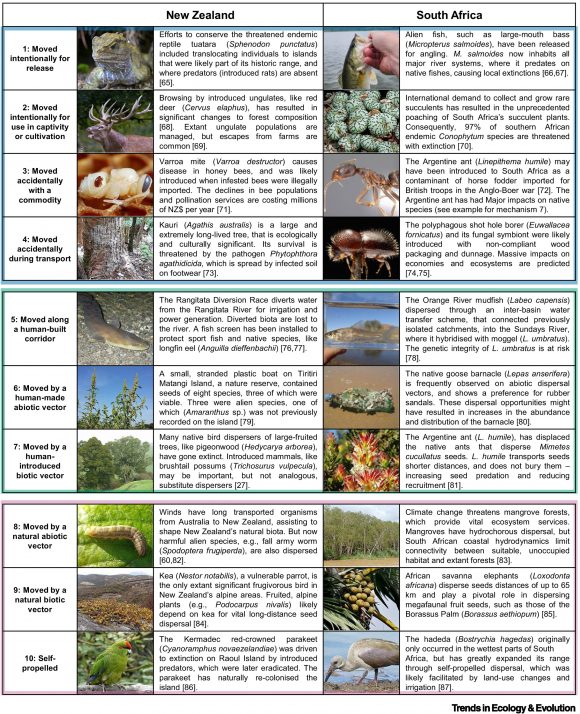A new global, policy-relevant scheme to classify the types of dispersal that characterise the Anthropocene is presented in a recent paper by Katelyn Faulkner, former C∙I∙B student and postdoc, and co-authors.
The dispersal of organisms in the Anthropocene has been profoundly altered by human activities, with massive, cascading, and accelerating impacts on human livelihoods and health, biodiversity, and ecosystem functioning. An improved understanding of how organisms are dispersing, and the implementation and integration of various actions to promote and limit dispersal will be required if the 2030 targets of the Kunming-Montreal Global Biodiversity Framework are to be met. For example, to meet Target 5 the wildlife trade needs to be managed; to meet Target 3 the connectivity between protected areas needs to be increased; and to meet Target 6 the rate of introduction of invasive species needs to be reduced.
In the paper, Faulkner and her co-authors argue that in the Anthropocene humans have created new dispersal mechanisms and altered natural dispersal. Based on insights from a wide range of disciplines, the authors expanded the widely used introduction pathway framework from invasion science to encompass all types of dispersal in the Anthropocene. The scheme recognises three types of dispersal that act synergistically to alter the ranges of species: active dispersal by humans, human-mediated natural dispersal, and natural dispersal; divided into ten mechanisms of dispersal. Each mechanism of dispersal is linked to the high-level management actions required to either promote or limit dispersal, and to the parties responsible for such management. The scheme will assist with monitoring and reporting towards various conservation targets.
“As our scheme is applicable to dispersal in a wide range of contexts it will help to improve our understanding of how organisms are dispersing in the Anthropocene, and as it is linked to management it will inform both conservation and biosecurity actions to manage dispersal,” says Katelyn Faulkner, lead author of the study published in Trends in Ecology and Evolution.
She adds that “in the context of biological invasions, it will assist to improve our understanding and management of the movement of alien species within regions to which they have been introduced”.
Read the full paper published in Trends in Ecology and Evolution
Faulkner, K.T., Hulme, P.E. & Wilson, J.R.U. (2024). Harder, better, faster, stronger? Dispersal in the Anthropocene. Trends in Ecology and Evolution. https://doi.org/10.1016/j.tree.2024.08.010
For more information, contact Katelyn at katelynfaulkner@gmail.com




